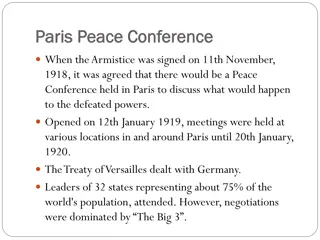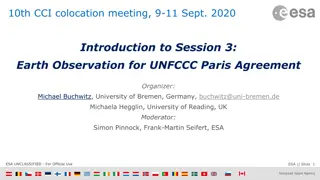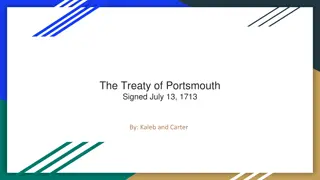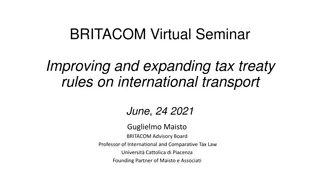Implications of Energy Charter Treaty Withdrawal and Paris Agreement
Ana Maria Daza Vargas from the University of Edinburgh discusses the impact of withdrawing from the Energy Charter Treaty and the relevance of the Paris Agreement in addressing energy and climate challenges. The ECT aims to promote energy cooperation and protect foreign investments, while the Paris Agreement focuses on mitigating greenhouse gas emissions and promoting sustainable energy practices. The intersection of these two agreements poses challenges and opportunities for achieving global energy and climate goals.
- Energy Charter Treaty
- Paris Agreement
- Investor-State Dispute Settlement
- Sustainable Development
- Climate Change
Download Presentation

Please find below an Image/Link to download the presentation.
The content on the website is provided AS IS for your information and personal use only. It may not be sold, licensed, or shared on other websites without obtaining consent from the author. Download presentation by click this link. If you encounter any issues during the download, it is possible that the publisher has removed the file from their server.
E N D
Presentation Transcript
The Withdrawal from the Energy Charter Treaty Ana Maria Daza Vargas University of Edinburgh
Outline The ECT and Investor State Dispute Settlement (ISDS) The Paris Agreement ECT modernisation /withdrawal / termination?
The ECT (1994) The ECT (1994) A legal framework: to promote long-term cooperation in the energy field for multilateral cooperation over transit, trade and energy efficiency for the protection of foreign investment and investor-state dispute settlement (ISDS) no different from general bilateral investment treaties (BITs) Particularly high stakes under ECT nature of business (Yukos Case EUR 50bn; Rockhopper v Italy EUR 190 mln) Sunset clause 20 years
The Paris Agreement (2015) The Paris Agreement (2015) Objective: Mitigation of greenhouse gas emissions, adaptation to climate change, and climate finance. 195 state parties to the UNFCCC signed the Paris Agreement and 190 have ratified it (by 2021). Limiting global warming below 2 C above pre-industrial temperature levels Mobilise financial resources, technology and capacity building
Implications of the Paris Agreement to the Implications of the Paris Agreement to the objectives of the ECT (?) objectives of the ECT (?) Sustainable Development Goals SDG 7 Affordable, reliable, sustainable and modern energy SDG 13 on the need to take urgent action to combat climate change and its impacts By 2050 of 97% 73% reduction on coal; 81% 87% oil and 21%-74% gas Increase share of renewables in global electricity by 63% 77% Bold transition measures? Yes . Stranded assets: $3trillion -7 trillion upstream oil/gas 257 coal-fired power stations are foreign-owned Increase the cost of climate action
Modernisation of ECT Modernisation of ECT Investment protection: Definitions Substantive standards Security for costs Valuation of damages Third-party funding, Sustainable development and corporate social responsibility NO- ISDS? Policy space: yes Paris Agreement: no
Issues Issues Azerbaijan and Japan resist the reference to workers rights oppose changes to the definition of economic activity as EU intends to phase-out investment protection for fossil fuels. The modernized ECT has not achieved a successful alignment with the Paris Agreement objectives and the European Green Deal, in order to fulfil our solid commitment to become climate neutral by 2050 Spanish diplomat general feeling. European Parliament calls for immediate withdrawal from failed, anti-climate Energy Charter Treaty
Withdrawal or Termination Withdrawal or Termination Italy Slovenia Germany The Netherlands Spain Poland France Luxembourg























